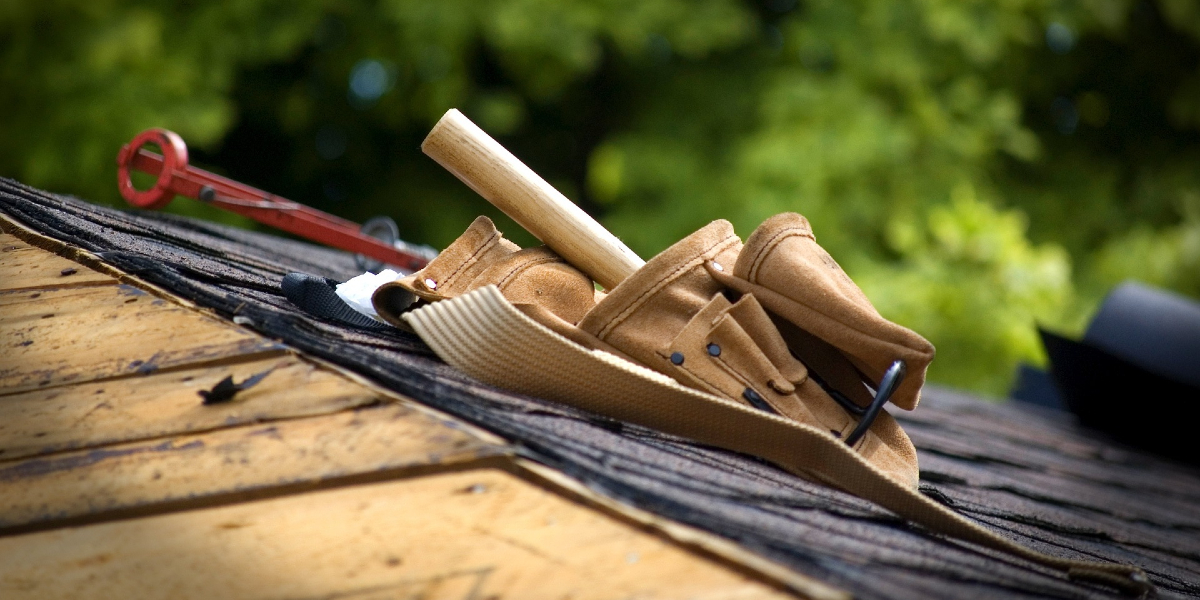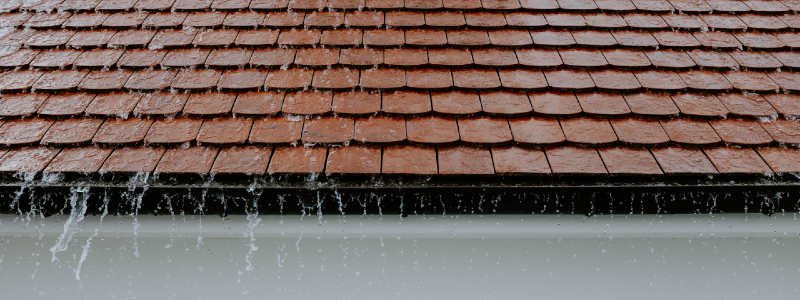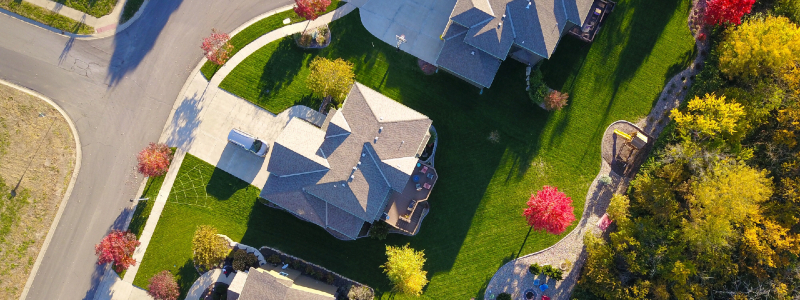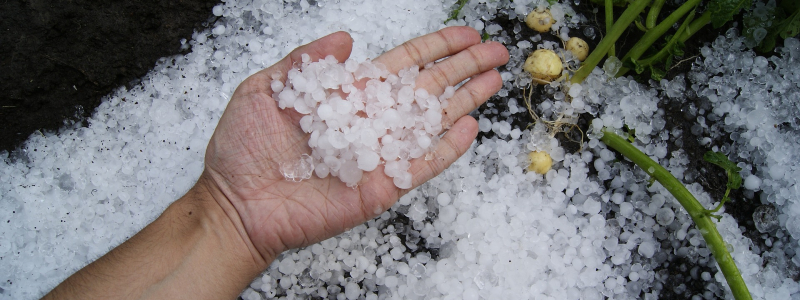
Do I Need to Replace Roof after Hail?
Hail storms, unfortunately, have become all too frequent in the Colorado region. In fact, Colorado has seen some of the most costly damages resulting directly from extreme hail storms. In August 2019, Colorado had the second-highest number of hail claims in the United States. So what should you know about hail in this region?
First, hail season in the Centennial state is considered to be from mid-April through mid-September. Your home is susceptible to damage during hail season and it’s important to know and understand repairs and replacements for roofs. The first question many homeowners should ask the experienced Colorado roofers at B&M Roofing is, do I need to replace roof after hail? The answer varies depending on the severity of the damage, but here are some key points to remember.

Dangers of Hail
Hail develops when the updraft from a wind carries rain into higher layers of the atmosphere, freezing the rain to create hailstones. Hailstorms negatively impact a number of local areas. It is catastrophic for a number of reasons, but mainly:
- – Hailstorms and the powerful winds that most often accompany them can also destroy crops. During hailstorms, farmers suffer losses that can wipe out their entire crop.
- – Hailstorms pose a high risk for airplanes. Aircraft can be seriously jeopardized if they are caught in the middle of a hailstorm. Planes can also be damaged when they are trying to land or take off in a hailstorm. In 2018 a Mexican airplane crashed when attempting to take off.
- – Hail can be catastrophic for land driving too. Hail can shatter windshields. Reduced visibility can cause roads to become hard to navigate. Hailstones make roads slippery and dangerous to drive on.
- – Hail can be dangerous. Larger hailstones—some as large as golf balls—destroy homes, especially since roofs are unprotected and bear the brunt of the impact.
- – Enormous hailstones can cause fatal head injuries and life-threatening concussions.
In 2014, America experienced the largest insured loss event when hailstorms hammered an area from Colorado to Pennsylvania in mid-May. The result was insured losses of almost three billion dollars. Homeowners were quick to file insurance claims and request inspections for hail damage. Unfortunately, there were long wait times given the influx of homeowner needs. For this reason, it’s important to know – do I need to replace roof after hail?
Hail Storms in Colorado
As we mentioned, Colorado’s hail season extends from mid-April to mid-September. The peak season is May, June and July.
Much of the area northeast of Boulder is open farms and ranches. Cumulonimbus clouds gather over the Rocky Mountains. They bring with them the potential for destruction: lightning, rain, tornados, and hail.
Colorado is especially prone to hail destruction. The state’s position is directly in what weather forecasters call Hail Alley. The state is also a mile closer to those dangerous slate-grey clouds than states like Florida.
Nationally, the annual hail damage is over $10 billion. Not surprising, Colorado is the number two state for hail insurance claims just behind Texas. Hail damages paid out by insurance companies continues to grow.

How Hail Impacts the Health of Your Home
Hailstorms are one of the most destructive forces in nature. They fall from great heights, traveling at high speeds.
Severe hailstorms can lead to huge losses to homes and vehicles. Hailstones easily penetrate glass roofs and skylights. Metal roofs are less likely to be compromised by hailstones. However, dents to roofs and automobile surfaces often require repair or replacement.
Hail, water, snow, and ice can all cause major damage to homes and commercial buildings. Due to the intensity of these storms, roofs can leak. This can lead to flooded basements, moldy attics, and collapsing ceilings. High winds that accompany hailstorms can shatter windows, blowing debris around to crash into windows and siding. Metal roof pieces can be ripped off.

The Process of Inspecting Buildings for Hail Damage
The damage from hailstorms needs to be assessed by an experienced Colorado roofing company. This specialist will look at several aspects of hail damage to your home’s roof.
Roof storm damage is all too common during a hail storm. During the initial inspection, a Colorado roofer at B&M Roofing will look for cracks, splinters, dents, dings, etc. On the more extreme side, they may evaluate holes/punctures, rips, and overall lasting impact on your home. On your roof, they look for things that are present or potential problem leaks down the road. It is crucial that the roof of your home be in good shape. After all, your roof protects the interior of your home.
Hail damage must be assessed or inspected before your insurance company will cover the damage. Before repairs are approved, you will need to get an assessment and an estimate from a Colorado roofing company that specializes in hail damage. They will be able to answer, do I need to replace roof after hail?
Before you contact a roofing specialist, here are some areas to look at:
Metal Roof Damage
Metal roofs are structurally the toughest material to protect your home or business against hail storms. However, metal roofs are not immune to issues caused by sizable hail. Denting on metal roofs may force their replacement if there’s a concern for cracking either immediately or with time. Cracking will eventually lead to leaks and, consequently, more damage to your home. During a check of your metal roof, be sure to inspect the vents, flashing, and metal valleys for dents or ensure that your hired professional metal roofer is paying strict attention to these details. Also, pay special attention to areas constructed of soft metal. Look for evidence of hail damage.
Asphalt and Composition Shingles Hail Damage
Climb to the top of the roof or have a damage specialist do this. Look at the ridge cap for signs of hail damage. For asphalt and composition shingles, hail damage will almost always be evident. Be sure to identify any of the below:
- – Random damage with no discernable pattern.
- – Hail hits that are black in color.
- – Loss of granules, which may expose the roof felt.
- – Asphalt and/or mat that appears shiny.
- – Hail hits that are soft to the touch, like the bruise on an apple.
Other Types of Roofs
There are a variety of roofs and all of them are susceptible to some degree of damage, some more than others. A trust roofing company like B&M Roofing can help you understand how hail damage has impacted your home both short-term and long-term. Contact us for a free inspection or estimate if your home has been damaged by a common occurring hail storm.
Types of Hail Damage
- – Hail causes three types of roof damage: bruising, cracking, and missing granules on the surface of asphalt shingles.
- – Large hailstones can cause cracks on the shingles.
- – Missing pieces on asphalt shingles can be the result of hail damage.
- – Bruising of shingles is harder to see. Finding bruising requires that you feel for small dents. The areas of these small dents will eventually break down.
Other Hail Damage Areas
Inspect other areas including gutters, downspouts, HVAC units, and decks.
Gutters that are dented, dinged, or cracked may need to be replaced. Otherwise, blockages may cause water to seep into the foundation.
Siding and windows can also be damaged by hail. Look for dents and dings. Check for damage to soffits and flashing.

Do I Need to Replace Roof after Hail?
If they are not replaced or repaired, roofs, soffits, gutters, and roof caps can result in severe damage to the interior of your home from water damage, mold growth, and broken windows. If not addressed immediately the damage can spread rapidly. Never ignore potential damage from hail. If a hailstorm has passed through your area, always assume it has done damage to your home until a storm damage specialist has assessed the damage.
When it comes to restoring properties from storm damage, make sure you choose a professional who specializes in roof repair and roof restoration. Look for a roof repair or restoration specialist who has both experience and excellent references. The roof of your house is its first defense against internal damage. It never pays to ignore hail damage or assume there was none simply because your untrained eye did not note any. Whether your structure needs a few repairs or major reconstruction, a knowledgeable, experienced roof repair and restoration specialist can bring your roof back to top condition.
If you are unsure about the condition of your home after a hailstorm, it is wise to contact an experienced Colorado roofing company for a Denver roof inspection. B & M Roofing will provide a free inspection and estimate to replace your roof.




































